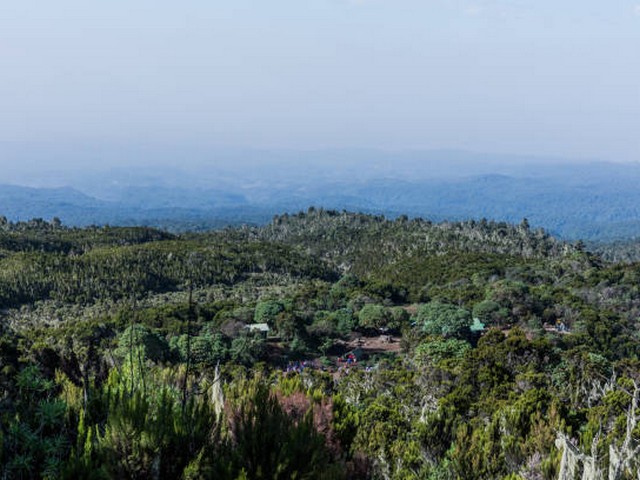How To Create A Photography Portfolio From Kilimanjaro Trekking
Embarking on a trekking adventure up the iconic Mount Kilimanjaro isn’t just a test of physical endurance; it’s an unparalleled opportunity for photographers, both amateur and professional, to capture the essence of one of the world’s most breathtaking landscapes. At Kilimanjaro Centre for Trekking and Ecotourism (KCTE), we understand that the moments captured during such a trek can form the backbone of a stunning photography portfolio. Here’s how you can transform your Kilimanjaro journey into a visual narrative that not only tells a story but also showcases your unique perspective as a photographer.
Discovering Your Unique Angle
Find Your Focus
Kilimanjaro offers a myriad of photographic subjects, from the stunning vistas at sunrise to the unique flora and fauna. Begin by deciding what will distinguish your portfolio. Will it focus on the majestic landscapes, the intimate wildlife interactions, or the human element of the trek? Identifying your focus will guide your lens and help you create a cohesive collection.
Embrace the Journey
Every step towards Kilimanjaro’s summit unfolds new scenes worth capturing. Utilize the diverse altitudes—from the lush rainforests of the lower slopes to the barren, moon-like terrains near the summit—to bring variety to your portfolio. Let your journey dictate the story you want to tell through your images.
Mastering the Technical Aspects
Gear Essentials
Invest in a robust, weather-sealed camera that can withstand the elements of Kilimanjaro. A good range of lenses, from wide-angle to telephoto, will help you capture vast landscapes and detailed close-ups alike. Don’t forget a lightweight tripod for those early morning shots and a sufficient number of batteries and memory cards.
Lighting and Composition
The best light on Kilimanjaro is during the golden hours of sunrise and sunset when the mountain glows with warm hues. Master the rule of thirds to enhance your compositions and use natural lines and shapes to lead the eye through your photographs. Experiment with different perspectives to add depth and interest to your shots.
Capturing the Human Element
Connect with Your Subjects
Photographing your fellow trekkers or the dedicated porters and guides can add a powerful human element to your portfolio. Always ask for permission before taking photos and engage with your subjects to capture more natural and meaningful images.
Documenting the Experience
Capture the range of emotions and the human effort it takes to conquer Africa’s highest peak. These images can be profoundly impactful, telling a story of endurance and triumph that resonates with everyone who views your portfolio.
Environmental Awareness and Respect
Leave No Trace
It’s crucial to maintain the integrity of the natural environment while photographing it. Always adhere to the ‘Leave No Trace’ principles, ensuring that future generations can also experience and photograph the untouched beauty of Kilimanjaro.
Promote Conservation
Use your photography to raise awareness about the importance of preserving Kilimanjaro’s unique ecosystems. Highlight the challenges the mountain faces, such as climate change and ecological degradation, to inform and inspire your audience.
Crafting the Final Portfolio
Selecting Your Best Work
Review your images critically and choose those that best represent your vision and the story you want to tell. Look for images that speak to you emotionally and aesthetically, ensuring a balanced representation of your trek.
Editing for Cohesion
Post-processing is where you refine your vision. Adjust exposure, color balance, and cropping to bring out the best in your images and create a visually cohesive portfolio.
Sharing Your Work
Consider the best platform for your portfolio, whether it’s a digital gallery, a printed book, or an exhibition. Each medium can offer different advantages and reach various audiences.
Why Book with Kilimanjaro Centre for Trekking and Ecotourism (KCTE)?
When planning your photographic journey up Mount Kilimanjaro, choosing the right tour operator is crucial. At KCTE, we provide expert guides who not only know the best paths to the summit but also the most photogenic spots along the way. We understand the needs of photographers and offer tailored advice to help you capture the best shots while ensuring a safe and memorable trekking experience.
FAQ
What is the best time of year to photograph Kilimanjaro?
The best times are during the dry seasons, from late June to October and from late December to March, when clearer skies provide better photographic conditions.
How physically prepared should I be for the trek?
While you don’t need to be an athlete, a good level of physical fitness will help you cope with the demands of trekking and give you a better chance at reaching the summit.
Can I rent photography gear in Tanzania?
Yes, several outlets rent out photography gear. However, for best results, we recommend bringing equipment you are familiar with.
How can I ensure my camera equipment is safe from the elements?
Using weather-sealed camera bags and making use of silica gel packets to absorb moisture can help protect your gear.
Conclusion
Creating a photography portfolio from your Kilimanjaro trekking experience can be as exhilarating as the climb itself. At Kilimanjaro Centre for Trekking and Ecotourism (KCTE), we are committed to helping every photographer achieve their vision, capturing awe-inspiring images that reflect the spirit of adventure. Ready to start your photographic journey? Contact us today to book your Kilimanjaro climb and take the first step towards building a breathtaking portfolio of Africa’s highest peak.




